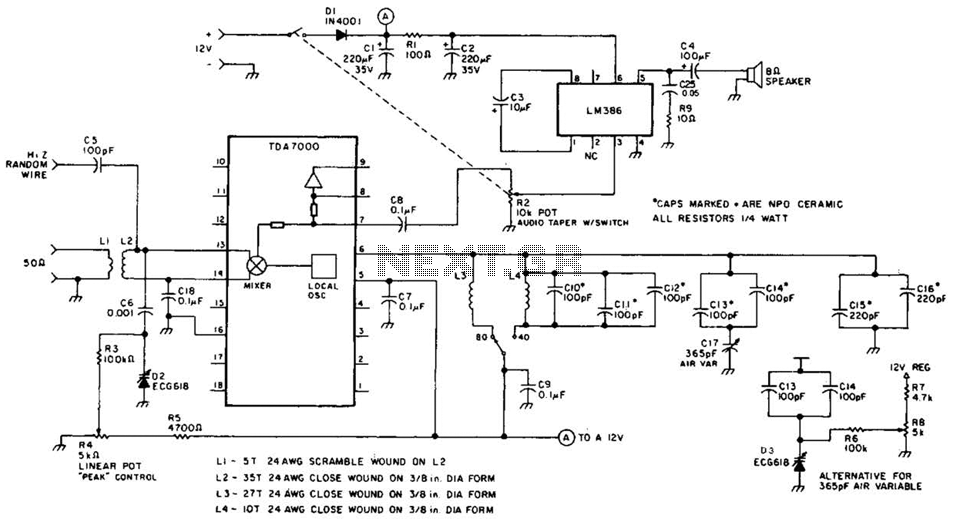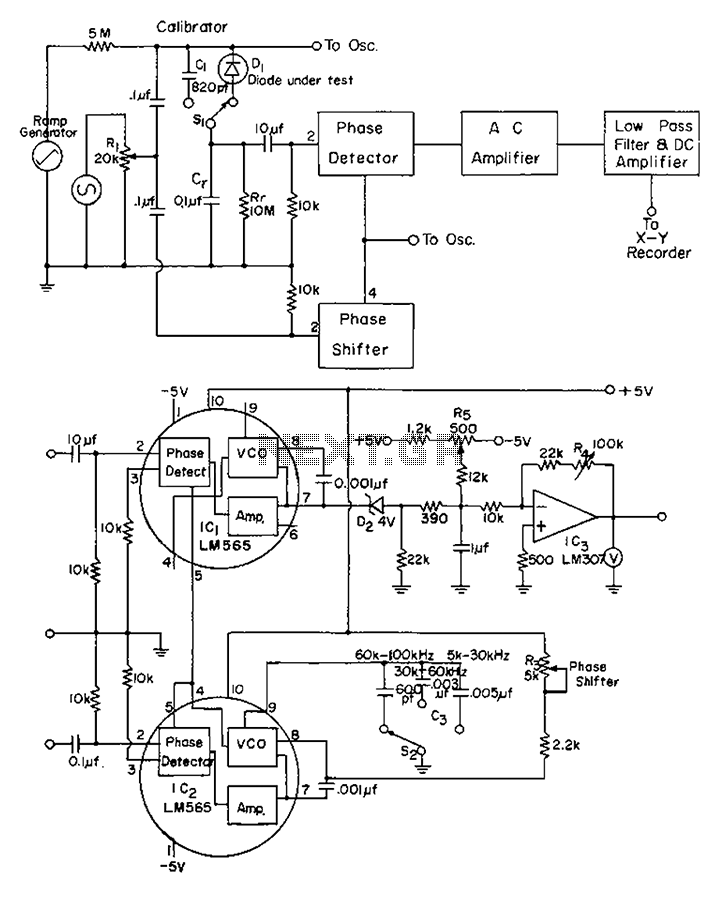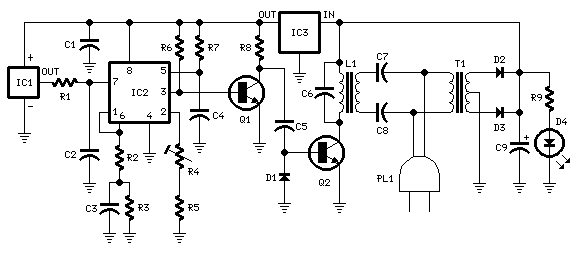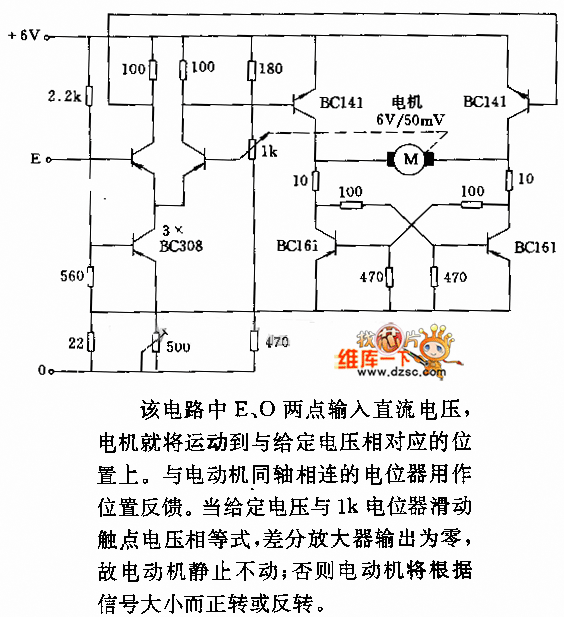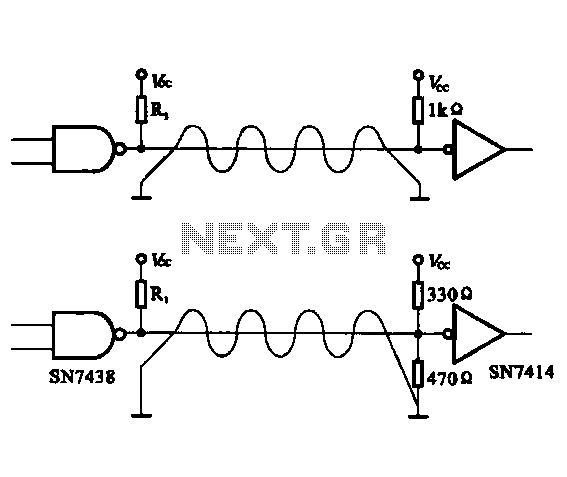
TBA810 - 7 Watt Audio Amplifier Circuit
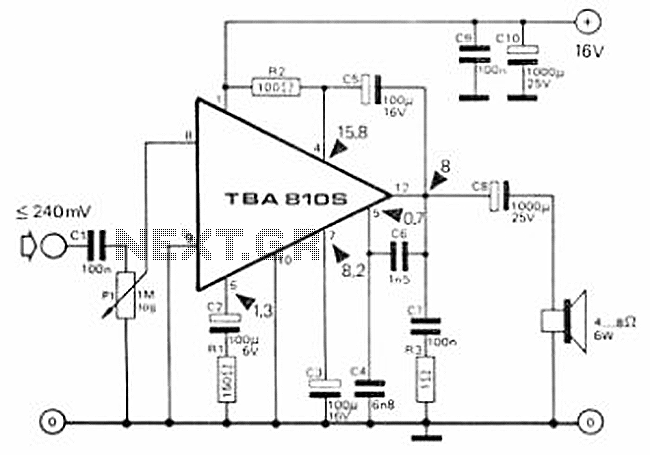
This circuit is a 7 Watt audio amplifier that is simple and easy to construct. It utilizes the TBA810 as the primary component, supported by a few passive components. The amplifier operates effectively, and the necessary kits and components are readily available at local electronics stores. The TBA810 chip is a Class B amplifier known for its high efficiency and very low harmonic distortion. It operates within an input voltage range of 4 volts to 20 volts. Key features of the TBA810 circuit include low noise, minimal external components, polarity inversion protection, and high supply voltage rejection (minimum 40 dB). The TBA810 monolithic audio amplifier is suitable for various audio applications, including car radios and other audio devices, as well as portable applications.
The 7 Watt audio amplifier circuit using the TBA810 is designed to provide a reliable and efficient solution for audio amplification needs. The TBA810 chip, which serves as the core of the amplifier, is a monolithic device that integrates various functions while minimizing the number of external components required. This design approach not only simplifies the construction process but also enhances the overall reliability of the amplifier.
The circuit operates on a voltage range between 4V and 20V, making it versatile for various power supply configurations. This flexibility allows the amplifier to be used in both portable and stationary applications. The Class B operation of the TBA810 ensures that the amplifier maintains high efficiency, which is particularly important in battery-powered applications where power conservation is critical.
In terms of performance, the TBA810 is engineered to deliver low noise levels, ensuring that the output audio is clear and free from unwanted distortion. The chip also features polarity inversion protection, which safeguards the circuit against damage that may occur due to incorrect power supply connections. Additionally, the high supply voltage rejection capability (minimum 40 dB) ensures stable performance across varying supply conditions, further enhancing the reliability of the amplifier.
The schematic design of the amplifier typically includes a few passive components such as resistors and capacitors, which are essential for setting the gain, filtering, and stabilizing the circuit. These components work in conjunction with the TBA810 to produce a high-quality audio output suitable for a range of devices, including car radios and portable audio systems.
Overall, the TBA810-based 7 Watt audio amplifier is an excellent choice for those seeking a straightforward yet effective solution for audio amplification, with the added benefits of low distortion and ease of assembly.Here`s a circuit of 7 Watt audio amplifier that is very simple and very easy to build. This amplifier is built using TBA810 as the main component with the support of a few passive components. This circuit can work well, kits and components of this circuit can be found easily at an electronics store in your area.
The TBA810 chip is a class B amplif ier with high efficiency and very low harmonic distortion. The input voltage range of the TBA810 is from 4 volts to 20 volts. Main features of the TBA810 circuit are : low noise, few external components required, polarity inversion protection, high supply voltage rejection ( 40dB min. ). TBA810 monolithic audio amplifier can be used in many audio applications for car radios, other audio devices or portable applications.
🔗 External reference
The 7 Watt audio amplifier circuit using the TBA810 is designed to provide a reliable and efficient solution for audio amplification needs. The TBA810 chip, which serves as the core of the amplifier, is a monolithic device that integrates various functions while minimizing the number of external components required. This design approach not only simplifies the construction process but also enhances the overall reliability of the amplifier.
The circuit operates on a voltage range between 4V and 20V, making it versatile for various power supply configurations. This flexibility allows the amplifier to be used in both portable and stationary applications. The Class B operation of the TBA810 ensures that the amplifier maintains high efficiency, which is particularly important in battery-powered applications where power conservation is critical.
In terms of performance, the TBA810 is engineered to deliver low noise levels, ensuring that the output audio is clear and free from unwanted distortion. The chip also features polarity inversion protection, which safeguards the circuit against damage that may occur due to incorrect power supply connections. Additionally, the high supply voltage rejection capability (minimum 40 dB) ensures stable performance across varying supply conditions, further enhancing the reliability of the amplifier.
The schematic design of the amplifier typically includes a few passive components such as resistors and capacitors, which are essential for setting the gain, filtering, and stabilizing the circuit. These components work in conjunction with the TBA810 to produce a high-quality audio output suitable for a range of devices, including car radios and portable audio systems.
Overall, the TBA810-based 7 Watt audio amplifier is an excellent choice for those seeking a straightforward yet effective solution for audio amplification, with the added benefits of low distortion and ease of assembly.Here`s a circuit of 7 Watt audio amplifier that is very simple and very easy to build. This amplifier is built using TBA810 as the main component with the support of a few passive components. This circuit can work well, kits and components of this circuit can be found easily at an electronics store in your area.
The TBA810 chip is a class B amplif ier with high efficiency and very low harmonic distortion. The input voltage range of the TBA810 is from 4 volts to 20 volts. Main features of the TBA810 circuit are : low noise, few external components required, polarity inversion protection, high supply voltage rejection ( 40dB min. ). TBA810 monolithic audio amplifier can be used in many audio applications for car radios, other audio devices or portable applications.
🔗 External reference
